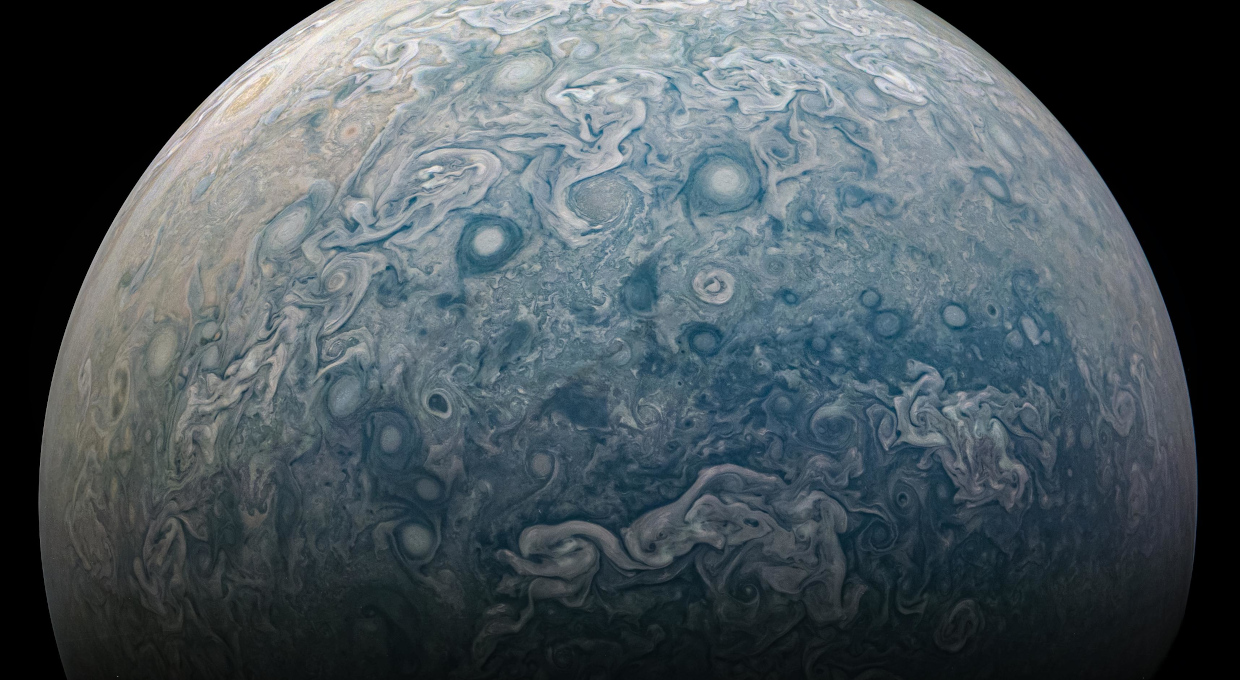Jupiter's Northern Hemisphere

During its 24th close flyby of Jupiter, NASA’s Juno spacecraft captured this view of a chaotic, stormy area of the planet’s northern hemisphere. Jupiter has no solid surface in the same way Earth does. Data collected by Juno indicate that some of the giant planet’s winds run deeper and last longer than similar atmospheric processes on Earth. Citizen scientist Kevin M. Gill created this color-enhanced image using data from the JunoCam camera. The original image was taken on Dec. 26, 2019, at 9:14 a.m. PST (12:14 p.m. EST) as the Juno spacecraft performed its 24th close flyby of the planet.
Image data: NASA/JPL-Caltech/SwRI/MSSS. Image processing by Kevin M. Gill, © CC BY
Are you interested in this topic?
Researchers at the University of Zurich are studying the formation and evolution of Jupiter and other planets in our solar system and beyond. Prof. Dr. Ravit Helled's group at the Department of Astrophysics is studying giant planet interiors, atmospheres, and their history of giant impacts. In addition, Prof Dr. Helled isinvolved with deep space missions such as NASA's JUNO spacecraft.
Are you a student that wants to learn more about Jupiter and other giant planets? Consider enrolling in the following courses:
AST 241: Introduction to Astrophysics (Fall Semesters)
AST 245: Computational Astrophysics (Fall Semesters)
AST 514: Planet Formation (Spring Semesters)